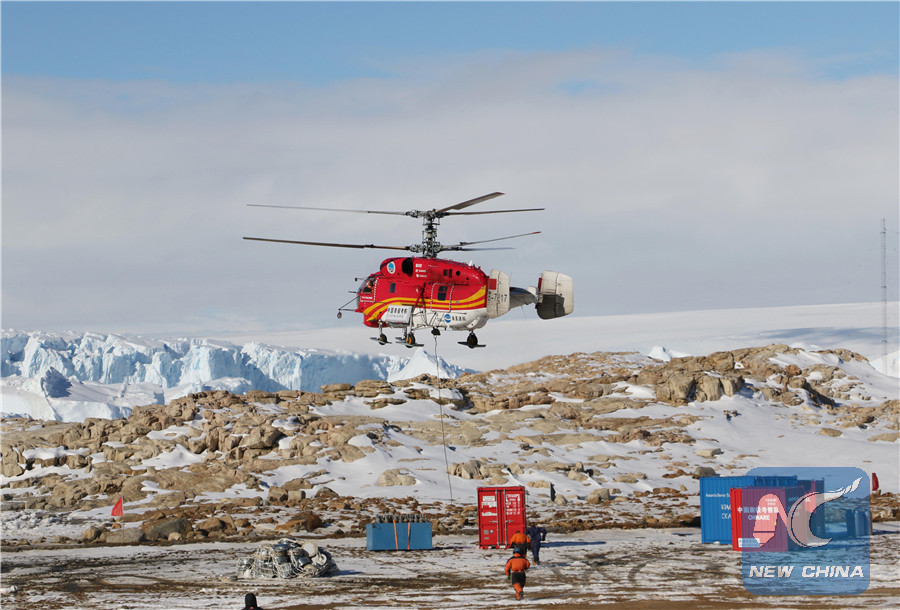
Snow Eagle at China's Zhongshan Station. (Xinhua/Rong Qihan)
ANTARCTICA, April 11 (Xinhua) -- Without the two transportation helicopters, Snow Eagle and Dolphin, the unloading at Chinese Antarctic research stations will not be that easy.
In November, research vessel and icebreaker Xuelong was stranded at a place 31 kilometers away from China's research station Zhongshan in east Antarctica's Prydz Bay, nearly one month after departing from Shanghai for the country's 33rd Antarctic expedition.
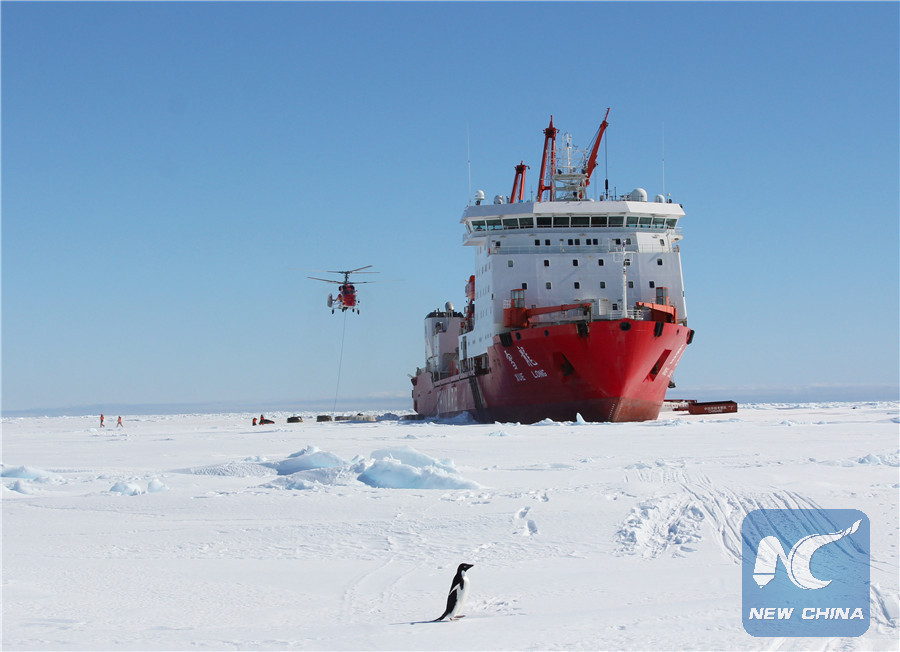
Snow Eagle hovers near China's icebreaker Xuelong. (Li Wenjun)
What were stranded with Xuelong were the goods necessary for researchers to spend both the summer and winter seasons at Zhongshan Station. After several tries to break the ice all failed, the helicopter Snow Eagle became the only option for transportation.
Among all the goods, the heaviest one was a 5-ton Arctic Truck, which almost reached the limitation of the hanging capacity of Snow Eagle, according to captain Liu Xinquan.
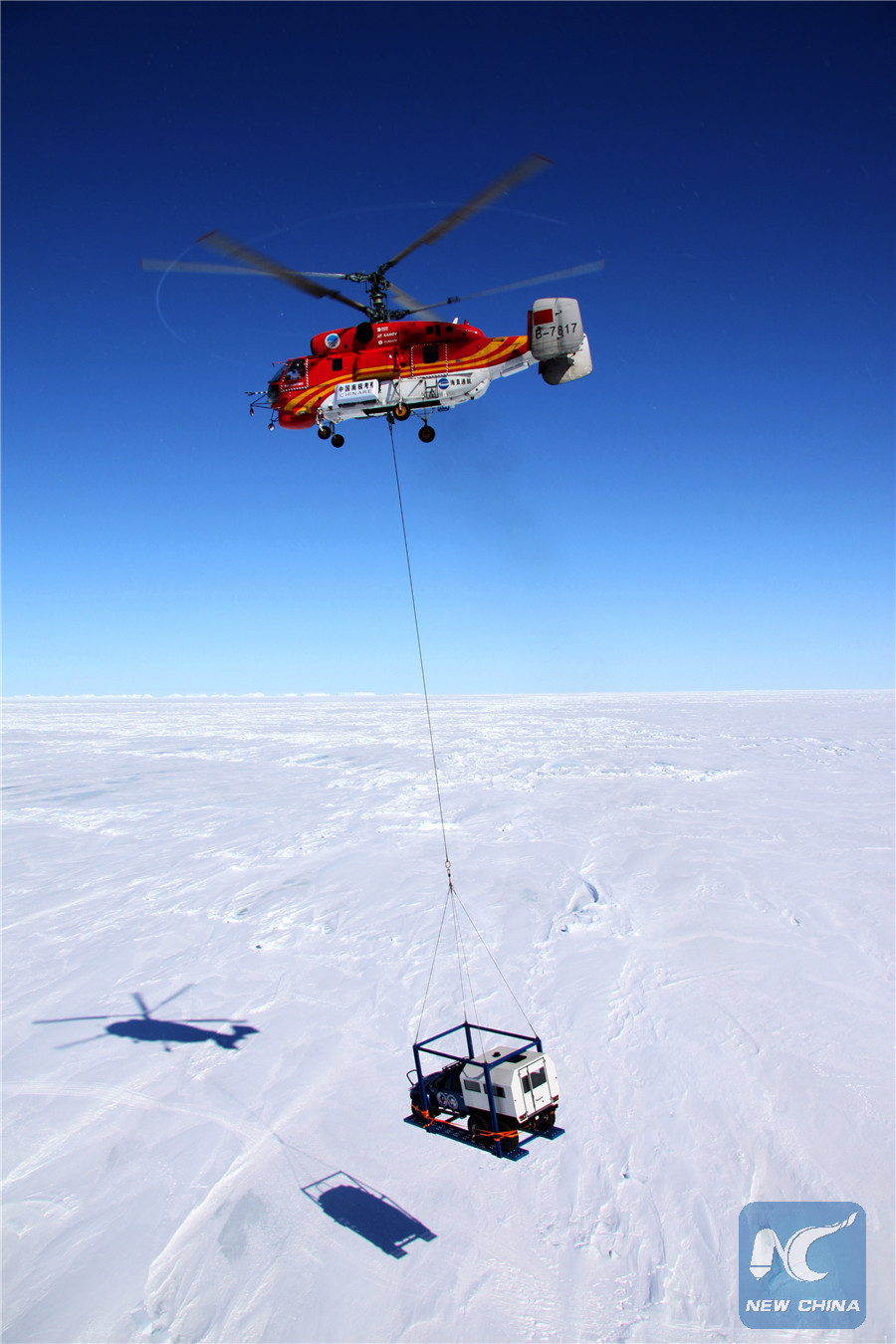
Snow Eagle is taking an Arctic Truck to Zhongshan Station. (Zhu Bing)
For a helicopter on the land of snow and ice, a big challenge is to fly with hanging cargos as it requires quick response to the fast-changing wind speed and wind direction . "You need to make sure that the heavy goods do not swing," said Cao Jinliang, leader of the helicopter team of the 33rd Antarctic expedition.
The two helicopters actually had different missions. Snow Eagle transported goods while Dolphin was in charge of personnel transportation.
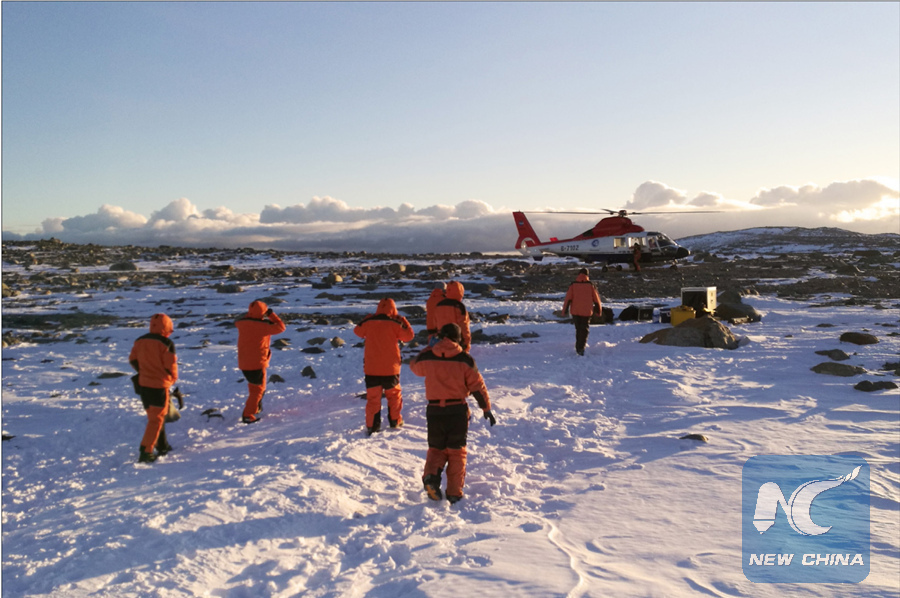
Chinese researchers are about to board Dolphin to leave the Inexpressible Island. (Zhu He)
In February, it was Dolphin that took Chinese researchers to the Inexpressible Island in the Antarctica's Victoria Land for the site selection of the country's new base near the Ross Sea.
Dolphin also took them to 78°04'40.9"S, the southernmost place that a plane has ever reached so far.
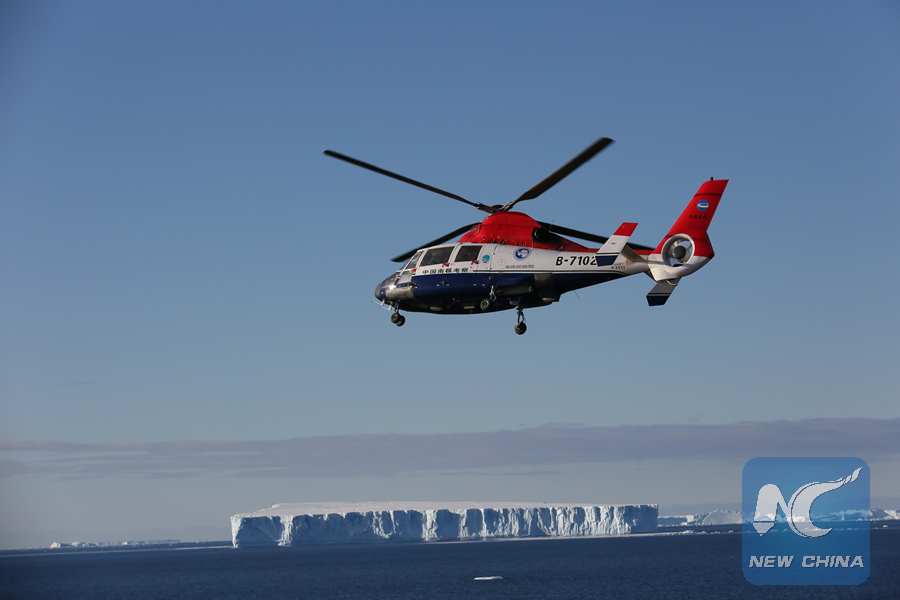
Helicopter Dolphin. (Liu Jian)
Every day, Dolphin had to deal with the fast wind speed, the strong airstream, and many other extreme weather conditions that are common on this land.
Four engineers were responsible for the safety of the two helicopters. Before every flight, 113 kinds of checks had to be made; after every flight, 116 more awaited them. Sometimes they even cleaned the helicopter with their bare hands for quite a long time, for gloves "would leave thread ends or fluff, which might bring dangers," said engineer Guo Yun.
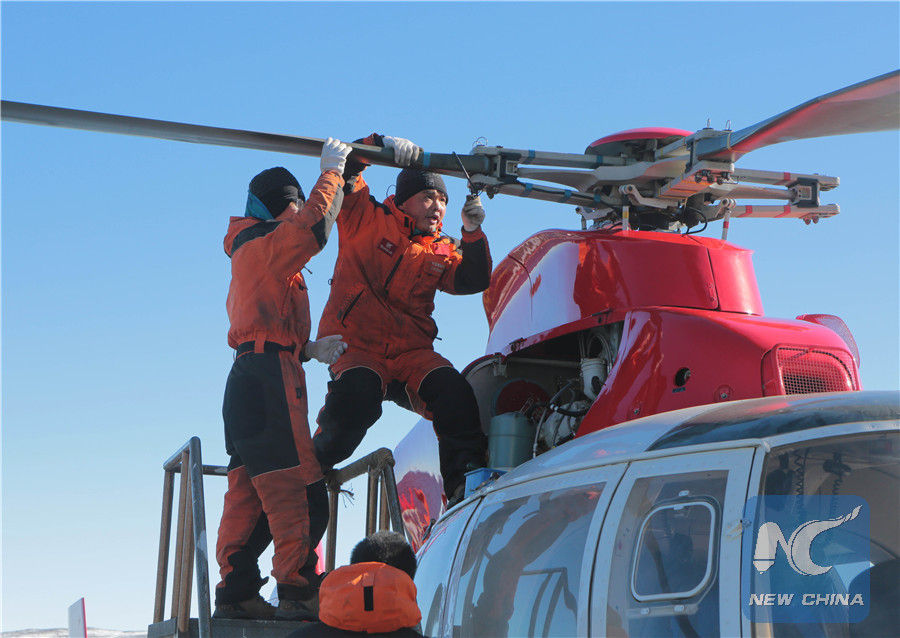
Chinese researchers are installing a rotor. (Xinhua/Rong Qihan)

